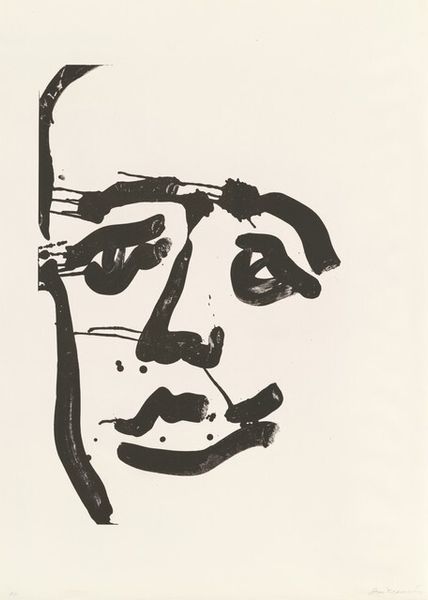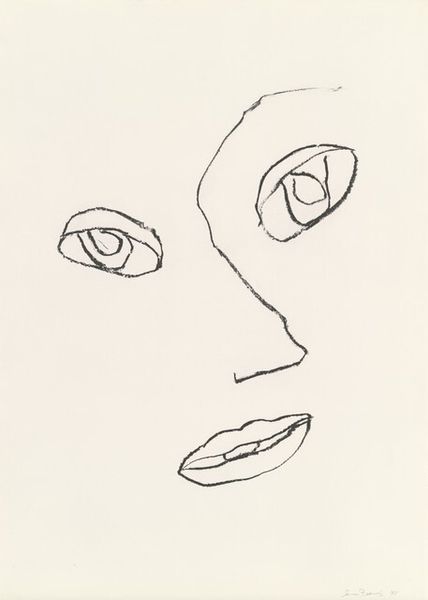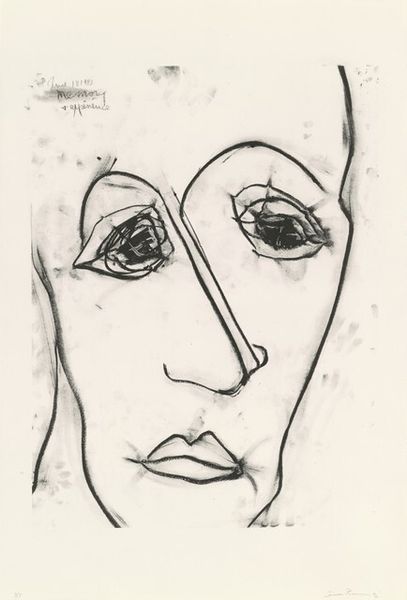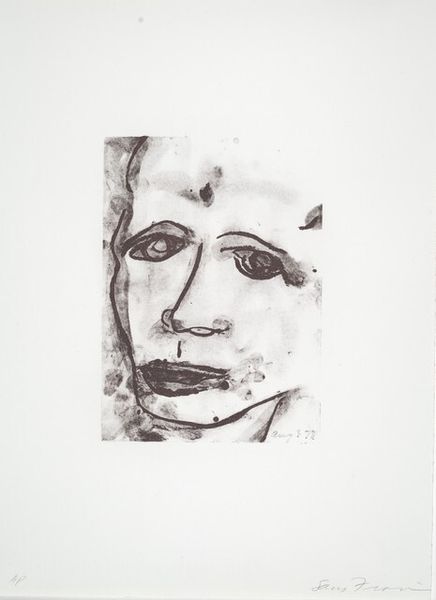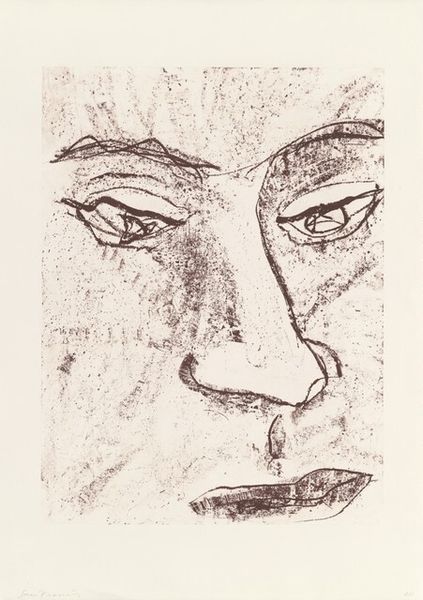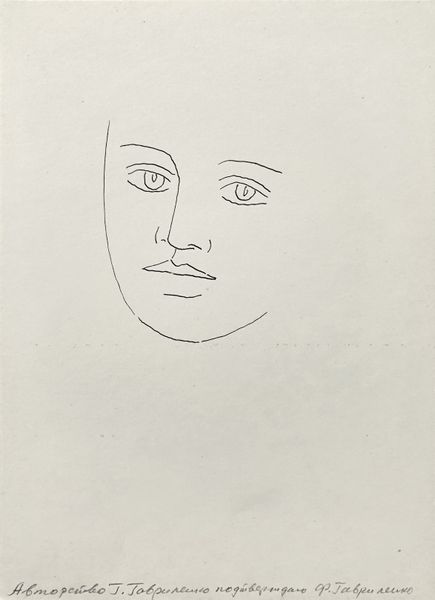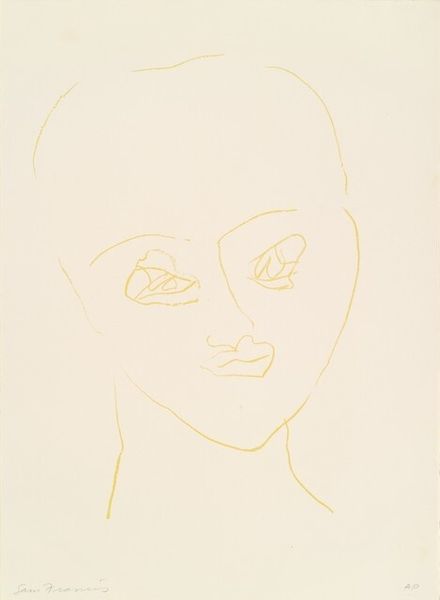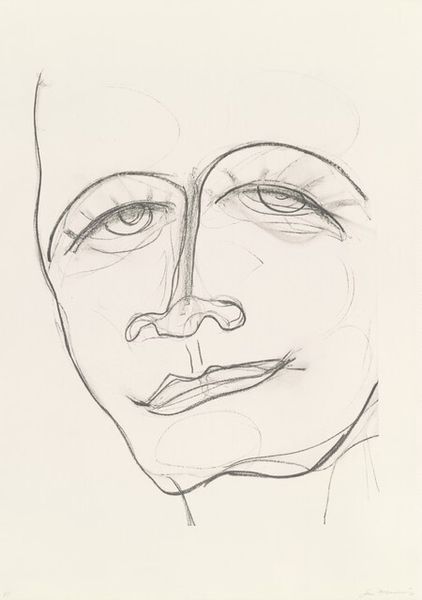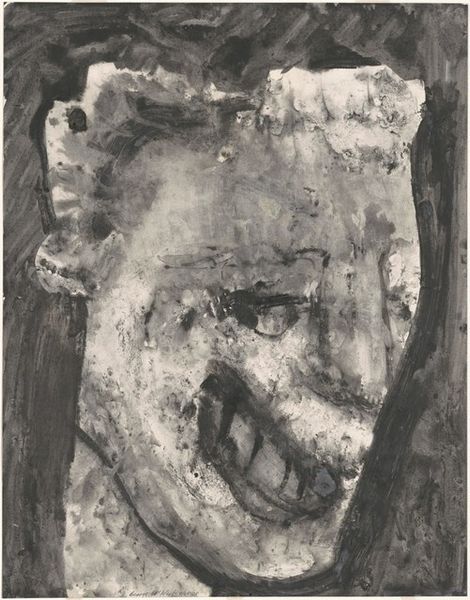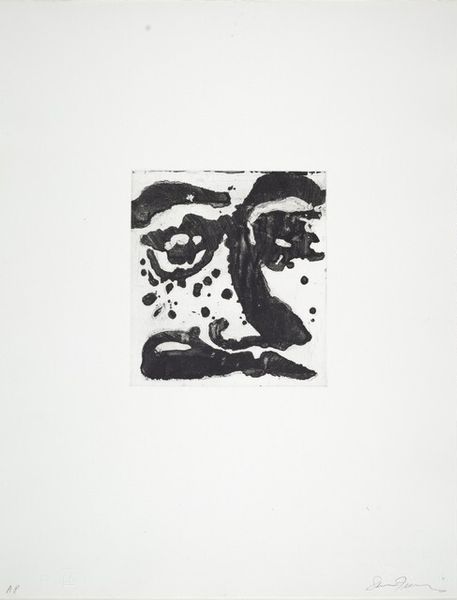
Dimensions: sheet: 63.7 x 75.6 cm (25 1/16 x 29 3/4 in.)
Copyright: National Gallery of Art: CC0 1.0
Curator: Up next we have Sam Francis's "Self-Portrait" from 1973. Francis was a master of color, known for his Abstract Expressionist canvases. Here, he pivots to stark black ink on what seems to be paper. Editor: The immediate feeling I get is rawness. The limited materials—ink and paper—combined with the simplicity of the lines makes it feel urgent, almost like a quick sketch done in a moment of intense self-reflection. Curator: Indeed, it departs from the oil paintings Francis is best known for, forcing us to consider a different facet of his practice. Self-portraiture, particularly within the Abstract Expressionist movement, can be seen as an exploration of the self in relation to a rapidly changing world. Consider the socio-political upheaval of the early '70s. What narratives of identity and existence were these artists grappling with? Editor: Absolutely. I think the reduction to the essentials is fascinating here. Ink, paper, hand… what else does one need to create a self? And the use of ink, in particular. It's unforgiving; every stroke is permanent, documenting a very physical interaction. There’s also an element of chance here, looking at those splatters of ink. The medium feels performative. Curator: Exactly! Francis, in this self-representation, is performing identity. Is he grappling with the performative nature of selfhood in a post-modern, post-structuralist world? How does the stark contrast relate to his use of pure, vibrant color in other paintings? Perhaps the absence of color represents a stripped-down, honest depiction. Editor: Or perhaps color became extraneous. Focus on line and form. I wonder about the tools used – the varying thickness and textures. It impacts the affect. One line gives weight, another, uncertainty. Curator: The question, then, becomes how do we reconcile the image with its historical moment, particularly for an artist already well-established? This begs us to interrogate ideas of fame, artistic legacy, and the expectations of an art market fixated on easily defined aesthetics. Editor: Ultimately, it’s a powerful reminder of the inherent simplicity and complexity embedded in the act of creation, the artist's body in relation to the materials and to self-examination. This self-portrait really compels one to reevaluate his established art practice. Curator: I agree. It prompts us to expand the narrative and to challenge limiting conceptions about the artist’s overall practice, not just about the individual as he presents himself to be.
Comments
No comments
Be the first to comment and join the conversation on the ultimate creative platform.
